Crosstalk between two terminated lines (RT=∞,RS= Z0)
|
An active line-1 and a passive line-2 are terminated by RS at near end, and are open at far end.
The voltages at both ends of active line are:
The voltages at both ends of passive line are:
where
An example waveform for a rising step input v01(t) with rise time tr=τ/2:
The pulse induced on passive line is called backward crosstalk or near-end crosstalk (NEXT). Focusing on the first wave (n=1), the voltage on passive line is:
where ξ is the crosstalk coefficient and rs is the normalized source resistance:
The amplitude of backward crosstalk saturates at the line length:
|
In the case of a parallel data transmission or a source synchronous clocking, transmission lines are identical. We will calculate the crosstalk between two identical lines.
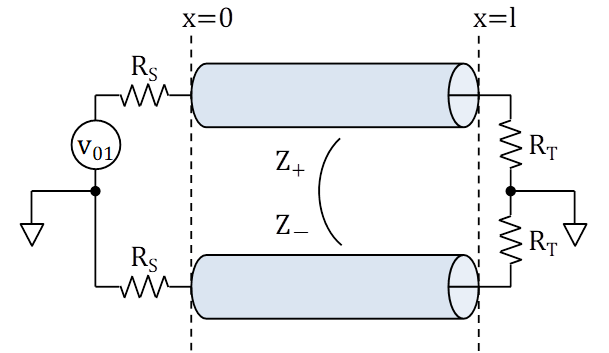
***
The voltages of line-1,2 will be derived from the voltages of even and odd mode. (→Multiple reflection in terminated coupled-lines)
![]()
where
![]()
![]()
***
For simplicity, we assume the conditions below:
(1) The far-end impedance is HiZ: RT=∞ i.e. ΓT+=ΓT−=1
(2) The propagation speeds are equal between even and odd mode : τ+=τ−=τ (TEM mode)
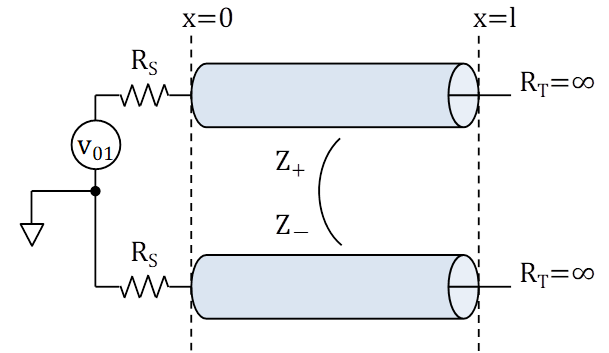
Then the voltages on line-1,2 results in more simple form.
Active line:
![]()
![]()
Passive line:
![]()
![]()
***
We will compute an waveform using these equations. For convenience, we express the reflection coefficients
![]()
with the crosstalk coefficient ξ and the normalized resistance rS:
![]()
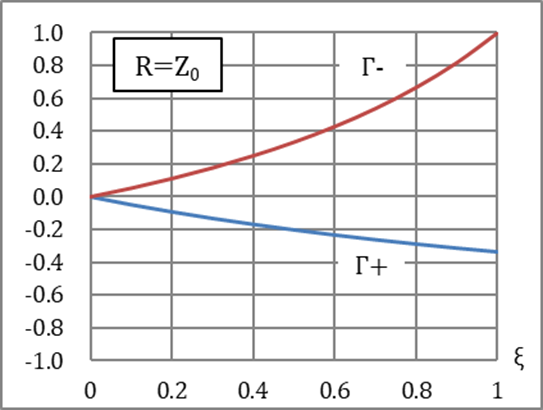
Assuming the input voltage v01(t) is a rising step with rise time tr=τ/2, and rS=1, ξ=0.4, the waveform is:

The pulse induced on passive line is called backward crosstalk or near-end crosstalk (NEXT).
***
For more intuitive understanding, we will simplify the equation above. We assume that the input voltage v01(t) is a rising step.
![]()
Using the identities
![]()
![]()
, the voltages on line-1,2 can be expressed in terms of the amplitude in nτ< t <mτ: v01(t-nτ)-v01(t-mτ),
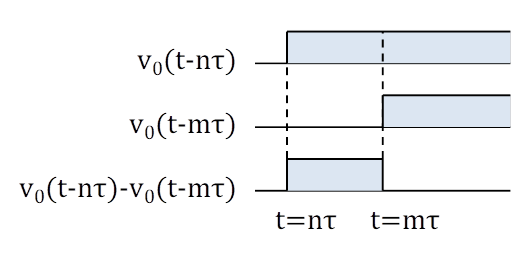
Active line:
![]()
![]()
Passive line:
![]()
![]()
or, explicitly
Active line:

![]()
Passive line:
![]()
![]()
Note that the amplitude v2(l,t) is twice as large as v2(0,t) because of the total reflection (ΓT+=ΓT−=1).
***
Because of |Γ|<1, the amplitude attenuates exponentially with time. Then we will focus on the first wave (n=1) on passive line:
![]()
![]()
Because of 0≦ξ<1, its polarity is the same as the input voltage. And the amplitude is almost proportional to the crosstalk coefficient ξ.
Especially, when the source resistance matches the characteristic impedance:
![]()
, the first wave on passive line is:
![]()
![]()
***
If the propagation time 2τ is smaller than the rising time tr, the amplitude of crosstalk becomes small.
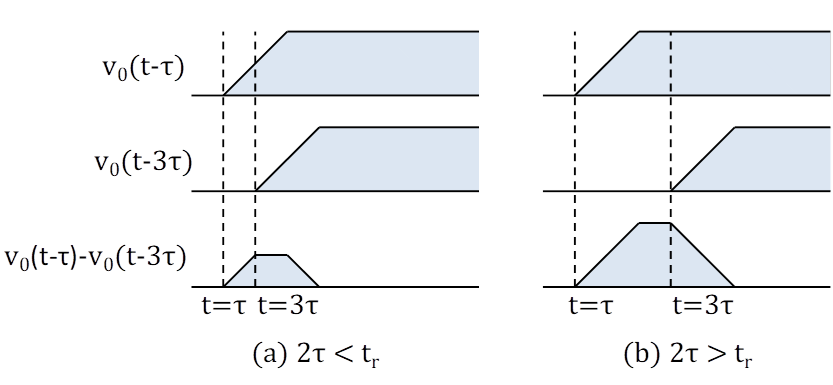
Conversely, the amplitude of backward crosstalk saturates at the line length:
![]()

